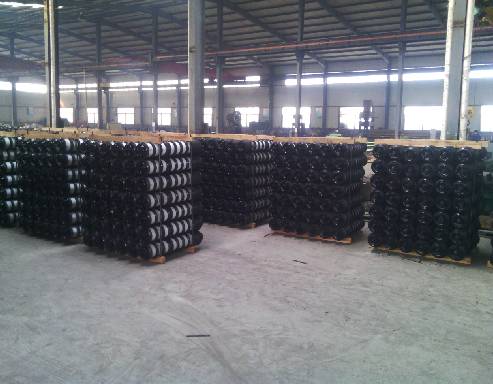 Afrikaans
Afrikaans  Albanian
Albanian  Amharic
Amharic  Arabic
Arabic  Armenian
Armenian  Azerbaijani
Azerbaijani  Basque
Basque  Belarusian
Belarusian  Bengali
Bengali  Bosnian
Bosnian  Bulgarian
Bulgarian  Catalan
Catalan  Cebuano
Cebuano  Corsican
Corsican  Croatian
Croatian  Czech
Czech  Danish
Danish  Dutch
Dutch  English
English  Esperanto
Esperanto  Estonian
Estonian  Finnish
Finnish  French
French  Frisian
Frisian  Galician
Galician  Georgian
Georgian  German
German  Greek
Greek  Gujarati
Gujarati  Haitian Creole
Haitian Creole  hausa
hausa  hawaiian
hawaiian  Hebrew
Hebrew  Hindi
Hindi  Miao
Miao  Hungarian
Hungarian  Icelandic
Icelandic  igbo
igbo  Indonesian
Indonesian  irish
irish  Italian
Italian  Japanese
Japanese  Javanese
Javanese  Kannada
Kannada  kazakh
kazakh  Khmer
Khmer  Rwandese
Rwandese  Korean
Korean  Kurdish
Kurdish  Kyrgyz
Kyrgyz  Lao
Lao  Latin
Latin  Latvian
Latvian  Lithuanian
Lithuanian  Luxembourgish
Luxembourgish  Macedonian
Macedonian  Malgashi
Malgashi  Malay
Malay  Malayalam
Malayalam  Maltese
Maltese  Maori
Maori  Marathi
Marathi  Mongolian
Mongolian  Myanmar
Myanmar  Nepali
Nepali  Norwegian
Norwegian  Norwegian
Norwegian  Occitan
Occitan  Pashto
Pashto  Persian
Persian  Polish
Polish  Portuguese
Portuguese  Punjabi
Punjabi  Romanian
Romanian  Russian
Russian  Samoan
Samoan  Scottish Gaelic
Scottish Gaelic  Serbian
Serbian  Sesotho
Sesotho  Shona
Shona  Sindhi
Sindhi  Sinhala
Sinhala  Slovak
Slovak  Slovenian
Slovenian  Somali
Somali  Spanish
Spanish  Sundanese
Sundanese  Swahili
Swahili  Swedish
Swedish  Tagalog
Tagalog  Tajik
Tajik  Tamil
Tamil  Tatar
Tatar  Telugu
Telugu  Thai
Thai  Turkish
Turkish  Turkmen
Turkmen  Ukrainian
Ukrainian  Urdu
Urdu  Uighur
Uighur  Uzbek
Uzbek  Vietnamese
Vietnamese  Welsh
Welsh  Bantu
Bantu  Yiddish
Yiddish  Yoruba
Yoruba  Zulu
Zulu types of idler in belt conveyor
Types of Idlers in Belt Conveyors
Belt conveyors are integral to the material handling industry, facilitating the efficient transport of goods in various settings, from mining to manufacturing. One critical component of these systems is the idler, which plays a vital role in supporting the conveyor belt. Understanding the different types of idlers and their specific functions is essential for optimizing conveyor performance.
1. Carrying Idlers
Carrying idlers are the most common type found in belt conveyors. They are primarily designed to support the belt loaded with cargo. These idlers keep the belt in its desired shape and help manage the weight of the materials being transported. Typically, carrying idlers come in various configurations, including troughing idlers and flat idlers.
- Troughing Idlers These are shaped in a trough-like manner, allowing for better containment of the materials being transported. They help in preventing spillage and provide support for the belt, ensuring proper alignment and tension.
- Flat Idlers Used primarily when there is no material load or when the conveyor is in transit mode, flat idlers provide a smooth surface for the belt, reducing friction and wear.
2. Return Idlers
Return idlers are located on the underside of the conveyor, supporting the belt as it returns to the loading point. They are crucial for maintaining belt tension and ensuring smooth operation without sagging, which can lead to belt damage and misalignment. Return idlers are often flat, and their primary function is to provide a surface for the belt's return journey, reducing unnecessary wear.
3. Training Idlers
Training idlers, also known as self-aligning idlers, are used to guide the belt and prevent it from drifting off its intended path. Keeping the belt properly aligned is critical to ensuring optimal performance and longevity of the conveyor system. Training idlers can be adjusted manually or automatically, depending on the conveyor design, and they are vital in maintaining the efficiency of the material handling process.
4. Impact Idlers
types of idler in belt conveyor

Impact idlers are placed in areas where the material load strikes the belt. These idlers are designed with shock-absorbing capabilities to minimize the impact from heavy loads, protecting both the belt and the idlers themselves. By reducing wear and tear during loading operations, impact idlers enhance the system's efficiency and lifespan.
In addition to the standard types mentioned above, various specialized idlers cater to specific applications and environments. These can include
- Dust Control Idlers Equipped with features to minimize dust generation, these idlers are essential in industries where dust can create safety hazards or environmental issues.
- Variable Angle Idlers Designed to adjust angles automatically, these idlers are ideal for applications that require flexible transport pathways, such as in conveyor systems with elevation changes.
- Roller Beds Used in high-capacity systems, these idlers are designed to support heavy loads while providing efficient movement with minimal friction.
6. Choosing the Right Idler
Selecting the appropriate idler for a belt conveyor system requires an understanding of the specific material being handled, the environment in which the conveyor operates, and the overall design of the system. Key factors to consider include load capacity, belt width, environmental conditions, and maintenance needs.
Properly functioning idlers not only support the effectiveness of the conveyor system but also play an integral role in improving efficiency and reducing operational costs. Regular maintenance and timely replacement of worn idlers are essential practices that ensure the longevity of the entire conveyor system.
Conclusion
Idlers are a fundamental component of belt conveyors, significantly impacting their performance and efficiency. By understanding the various types of idlers—carrying, return, training, impact, and specialized idlers—operators can optimize their material handling processes, ensuring smooth transportation of goods while minimizing downtime and operational costs. The choice of idler types should be carefully matched to the application to achieve the best results in any conveyor system.
-
Revolutionizing Conveyor Reliability with Advanced Rubber Lagging PulleysNewsJul.22,2025
-
Powering Precision and Durability with Expert Manufacturers of Conveyor ComponentsNewsJul.22,2025
-
Optimizing Conveyor Systems with Advanced Conveyor AccessoriesNewsJul.22,2025
-
Maximize Conveyor Efficiency with Quality Conveyor Idler PulleysNewsJul.22,2025
-
Future-Proof Your Conveyor System with High-Performance Polyurethane RollerNewsJul.22,2025
-
Driving Efficiency Forward with Quality Idlers and RollersNewsJul.22,2025





























